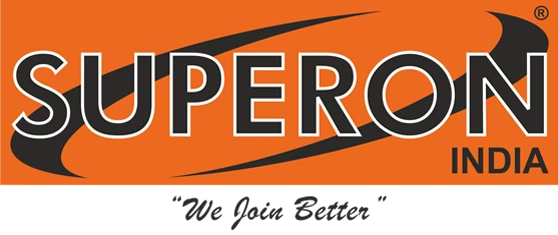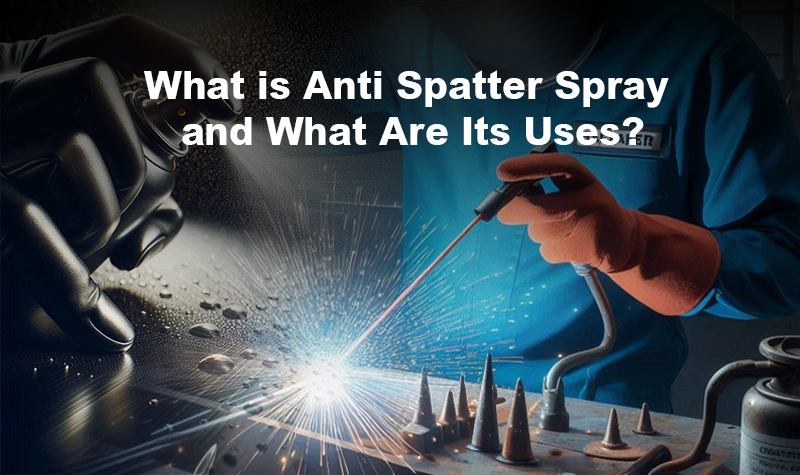Welding is all about precision, strength and a clean finish. If you've worked with welding equipment before you know what a nuisance spatter can be. Those small droplets of molten metal that are ejected during the welding process will stick to every surface around you; your equipment, your workpiece, even your clothes! This is where anti-spatter spray comes in to save the day.
In this blog we're going to explain what anti spatter spray is, how it works, the types of anti spatter spray on the market and why it's important that you have it in your welding arsenal.
Anti-Spatter Spray: What is it?
Anti-spatter spray is a formulated liquid that keeps welding spatter from sticking to surfaces. It is applied before welding begins and it holds off molten spatter droplets from joining the metal and your tools.
From structural steel, automotive, to intricate work, the anti-spatter spray can maintain a clean and smooth work area. And, it is not just for the aesthetic clean look; a clean weld means less defect and better durability.
Why Does Spatter Happen?
Welding uses an arc, with either MIG or flux core, which melts metal causing molten metal to be emitted away from the weld, not necessarily the same job creation way or method of welding spatter. As the heating occurs, the arc gets hot enough to liquefy the welding wire, pooled in the welding puddle as it flows into the joined materials, and not hooked with arc blasts and sometimes bits of flux that enter the arc. This molten metal is quickly cooled and adheres to any surface near its direction. If there is no anti-spatter spray, welding spatter can lead to:
- Surface contamination
- Slag inclusion
- Rough work finish
- Wear and tear of equipment
Having anti-spatter spray can help with reducing or preventing these types of spatter issues.
Anti-Spatter Spray Advantages
Prevents Spatter Build-up: It acts as a barrier between welding spatter, allowing spatter droplets to slide off instead of sticking.
Protects Tools and Equipment: The nozzles, contact tips, and torches are cleaner and you can maintain the tools for a longer period of time, while also providing uniform performance.
Quicker Post-Weld Clean-up: Instead of having to spend the time and effort to grind or chisel off spatter, just wipe away with a quick swipe.
Improved weld quality: So, you get uniform welds with few defects because you have maintained a clean surface, which in turn creates a more uniform weld in terms of appearance.
Reduced downtime: Less time spent cleaning tools or replacing equipment when it is coated with spatter means more time doing your job.
Characteristics of High-Quality Anti-Spatter Sprays
Quality spatter sprays typically have formulations with the following characteristics that make them safe and effective:
- Non-flammable
- Resistant to rust and corrosion
- Can be silicone-free or silicone-based depending on the job application
- Creates a lasting barrier
- Non-toxic and safe for indoor use
Types of Anti-Spatter Products
-
Silicone-Based Anti-Spatter
Silicone-based sprays will create a slick surface, which makes it difficult for spatter to adhere to, these types of sprays are common to ensure welding nozzles remain clean and also used to protect workpieces while welding. These sprays can be problematic if the metal is going to be painted or coated because the surface residue can interfere with adhesion, so they should only be used if no further finishing is required on the metal post-weld.
Super Silicone Spray Welding Anti Spatter from Superon Technik is a superior solution developed to minimize spatter adhesion, enhance weld quality, and extend equipment life. Engineered with superior silicone-based technology, this anti-spatter spray ensures seamless welding operations across diverse industrial applications.
-
Non-Silicone Anti-Spatter
These non-silicone anti-spatter sprays work great if you are going to paint or coat the metal afterward, they have equal performance to the silicone-based sprays but do not leave behind a surface residue which is required for proper adhesion.
-
Ceramic Anti-Spatter
Here is an option for heavy-duty work. Ceramic sprays create an insulating shield that can withstand extreme heat, as high as 1830 degrees. Ceramic anti-spatter is great for protecting welding torches, tips, jigs, and fixtures from welding spatter in high heat, volume, production welding.
-
Water Soluble Anti-Spatter
These are environmentally-friendly, paintable, and non-flammable options. They are effective on mild steel, stainless steel, and even aluminum, perfect for applications where an operator will have to do some finishing after the weld.
How to Apply Anti-Spatter Spray?
There are many methods for applying anti-spatter, depending on the product you are using and your application settings.
-
Aerosol
Aerosol is the most common way. Shake the can, then spray evenly over the area and let it dry. It can be used for smaller jobs or larger jobs.
-
Brush
Brush application is useful for applying to very specific or smaller areas. This option is often more controlled.
-
Dip
Small pieces can be dipped into an anti-spatter solution to give comprehensive coverage.
-
Gel or Paste Form
For more vertical or overhead surfaces, where the liquid spray may run, gels provide much better adhesion and area coverage.
Application Tips
You want to remember one rule when using anti-spatter spray.
- Always apply before you start welding.
- Follow the manufacturer's directions, especially with regard to the drying time.
- To get the best results, you want to apply a thin and uniform coat.
- Store sprays in a cool, dry location to maximize effectiveness.
Power of Super Silicone Spray Welding Anti-Spatter
When asked, one of the best products on the market is Super Silicone Spray Welding Anti-Spatter. This product is silicone-based and is designed to help you weld smoother and last longer. Why use Super Silicone Spray Welding Anti-Spatter? Simply put, professionals simply trust it.
The reasons why are:
- Forms an invisible, non-staining barrier
- Provides precise weld
- Protects from moisture and corrosion
- Prolongs tool and equipment life
It's a product that everyone can count on to be consistent with high-quality welds across various industrial applications.
Why Every Welder Needs Anti-Spatter Spray?
Welders that are serious about their profession know that anti-spatter spray is quite essential. Anti-spatter is no longer optional! All in all, it is workforce, time, clean-up, and weld quality. The product choice is up to you; just choose the one that fits your flow and materials.
You can pick a pure silicone-based formula for heavy-duty protection, or you can pick a water-soluble spray that sprays on easily and can be worked with, painted, or otherwise finished. Whatever you prefer, the solutions are out there.
Purchase Your Super Silicone Spray Today
Are you ready to perform your welding, and take it to the next level? If so, look no further than Superon Technik's Super Silicone Spray. Our spray provides unbeatable performance, easy application and long lasting results. Your projects will benefit from reduced spatter build up, protection of your workplace, and superior welding quality.
This product is a high performance spray focused on helping you work smarter rather than harder, eliminating the risk of having to scrub the spatter residue off your surfaces, and inhaling potentially harmful fumes while cleaning. You truly will be able to achieve clean, professional welds, every time.
Conclusion
Anti-spatter sprays may be viewed as an inconsequential addition to the welding cash, however, we noted the difference in quality and anti-spatter product could offer during our tests and presentations to our customers. It continued to prove its benefit in many areas of the welding process right through to the final finish quality of the workpiece, not to mention negligible maintenance costs on your equipment. Therefore, choose wisely and apply accordingly for your next job to help you weld with confidence.

